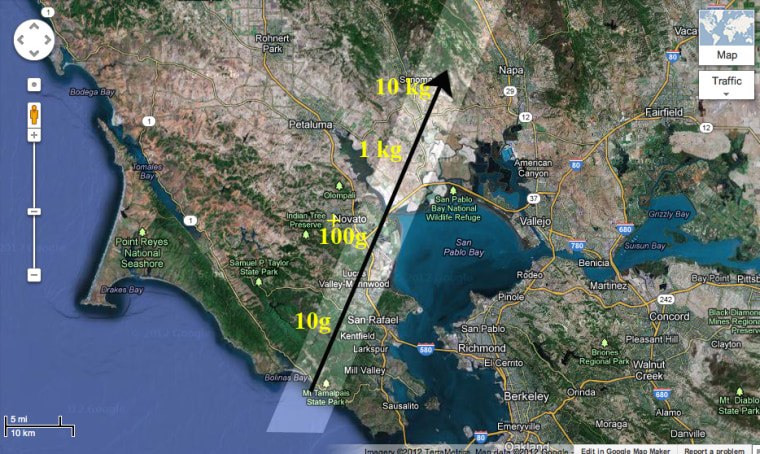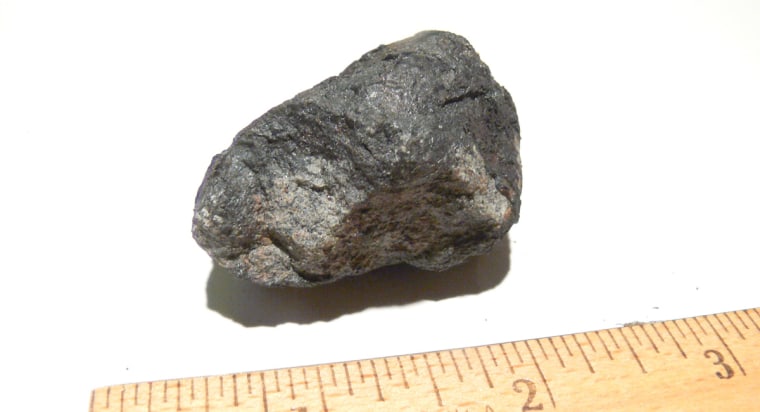After a flurry of doubts, an expert on meteorites has decided that a rock found in the backyard of a San Francisco Bay Area home could have come from space after all.
The origin of the rock has been debated because it could be a leftover from a meteor that lit up the night sky over Northern California more than a week ago.
Lisa Webber, a nurse at the University of California, San Francisco Medical Center, read about the fireball and recalled hearing a sound on the roof of her house in Novato, Calif., on the night in question. Sure enough, she and neighbors found a ding on the roof and a likely-looking rock in her backyard.
Peter Jenniskens, head of the CAMS (Cameras for Allsky Meteor Surveillance) project, which is jointly run by NASA and the SETI (Search for Extraterrestrial Intelligence) Institute, came to investigate.
At first, he thought the 2.2-ounce (63-gram) rock was a meteorite, based on its apparent density and response to a magnet. Then he judged the rock to be a "meteor-wrong" of earthly origin, based on the results of microscopic analysis. In a statement posted on the CAMS website on Monday, Jenniskens said the rock's crust appeared to be "a product of weathering of a natural rock, not from the heat of entry."
On Wednesday, however, Jenniskens reversed course again — largely because of the discovery of a second 2.3-ounce (65-gram) fragment that was similar to Webber's rock. CAMS reported that the second piece was found by Sacramento meteorite hunter Brien Cook 2.5 miles (4 kilometers) southeast of Webber's backyard.
Cook initially threw the rock in the trash, but retrieved it after seeing a picture of Webber's find. When the stone was cut open, its appearance was found to be consistent with what would be expected for a chondrite meteorite.
"We are in the process of finding out exactly what type of meteorite we are dealing with here," Jenniskens was quoted as saying, "but we now understand that the layered structure of the fusion crust that made me doubt myself is not the result of terrestrial weathering. That is a big relief! What a privilege to get to study such an unusual and hard-to-identify meteorite!"

The San Francisco Chronicle reported that samples from both fragments would be sent to Alan Rubin, a meteorite expert at the University of California at Los Angeles, for further analysis. Meanwhile, a 6.6-gram chip from the fragment that Cook found is up for sale on eBay.
Jenniskens is hoping still more fragments will turn up, so he can trace the fireball's line of flight on Oct. 17. He and other experts suspect that a car-sized rock blazed through Earth's atmosphere from east of San Rafael and broke up as it followed a path over Novato heading toward Sonoma. Images of the fireball were captured by cameras and cell phones at around 7:44 p.m. PT.
This report includes information from Space.com and NBC News.
